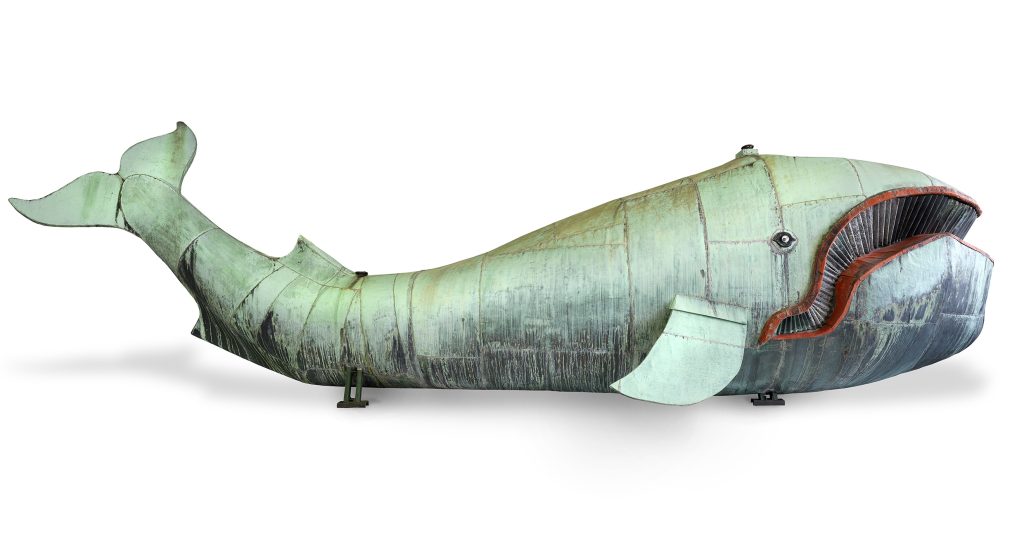The whale comes up for air at Karlsplatz
The newly designed Vienna Museum enables – free of charge – a fascinating journey through time through the history of the city. Praterwal Poldi plays a particularly important role, as the sculpture combines folk culture and science.
A tour by Chiara Joos
The seemingly endless expanses of our oceans are home to around 90 species of whales, divided into toothed whales such as dolphins and killer whales, as well as baleen whales such as the blue whale and the humpback whale. Each species harbors its own unique characteristics, behaviors and whale songs. From the cold Arctic waters to the warm tropical seas, they are widespread worldwide and represent species protection and the changes to our habitats caused by climate change. And then we have Poldi, the Praterwal.
For more than 60 years, Poldi majestically decorated the roof of the popular Viennese inn “Zum Walfisch” and shot its water fountains into the sky. Rebuilt after the Second World War, the origins of the traditional place go back to the late 18th century, when the coziness of the pub culture merged with the soul of the city. But in 2013 it suddenly ended. The well-known landmark from the Prater was razed to the ground and Poldi was transported to southern Lower Austria. The plan was to dispose of the voluminous whale – 10 meters long, made of wood and copper sheet and weighing more than two tons. But building contractor Güner Ayaz came onto the scene and became the savior of the Prater giant with the blue eyes. After a telephone conversation with the Vienna City Councilor for Culture, the sculpture was donated to the Vienna Museum – saved from oblivion and further decay.
In the heart of the city, the new Vienna Museum shines in new splendor, embedded in the backdrop between Karlsplatz and Karlskirche – the museum’s own terrace offers a view of it. After “eight intensive years of planning and three exciting years of implementation,” according to the management duo Matti Bunzl and Christina Schwarz, Oswald Haerdtl’s 50-year post-war building, which was sparse at the time, was reopened to visitors on December 6, 2023. Completely renovated after expansion by the architectural team Ferdinand Certov, Roland Winkler and Klaudia Ruck, the building made of Croatian limestone with shell inclusions and Wachau marble is considered a place that preserves the past and leads into the future.
After a four-year renovation marathon, the Vienna Museum presents itself freshly spruced up and in a completely new look. The renovation and restructuring of the Vienna Museum was made possible with a budget of over 108 million euros. At the opening of the building, Mayor Michael Ludwig defined the new museum as “a place of meeting, a place of participation, a place of knowledge exchange.” Entry into the journey through time is free, a gesture of the museum that is not only as a preserver, but also as part of the community. The changing special exhibitions can be visited with a conventional admission ticket.
Let’s swim back to the whale and its origin. The Wurstelprater is anchored in Vienna’s identity like no other place – and the setting for the next opening: The over 250-year history and lively present of the amusement park will soon find their home in the Pratermuseum next to the Vienna Giant Ferris Wheel. The foyer opens the fascinating Prater history with a panoramic picture. The floors above present historical treasures such as carousel and Punch and Judy figures. The foyer invites you to events, while the impressive panoramic picture visually guides visitors through the Prater’s history. On March 15, 2024, the Pratermuseum officially opens to share the history of this emblematic amusement park with an interested public.
You can read the full text in the 2024 ball magazine, which will be published on the evening of the ball.
